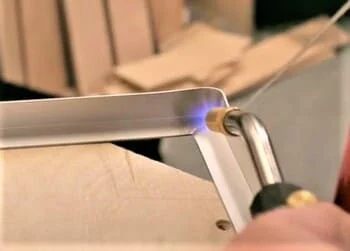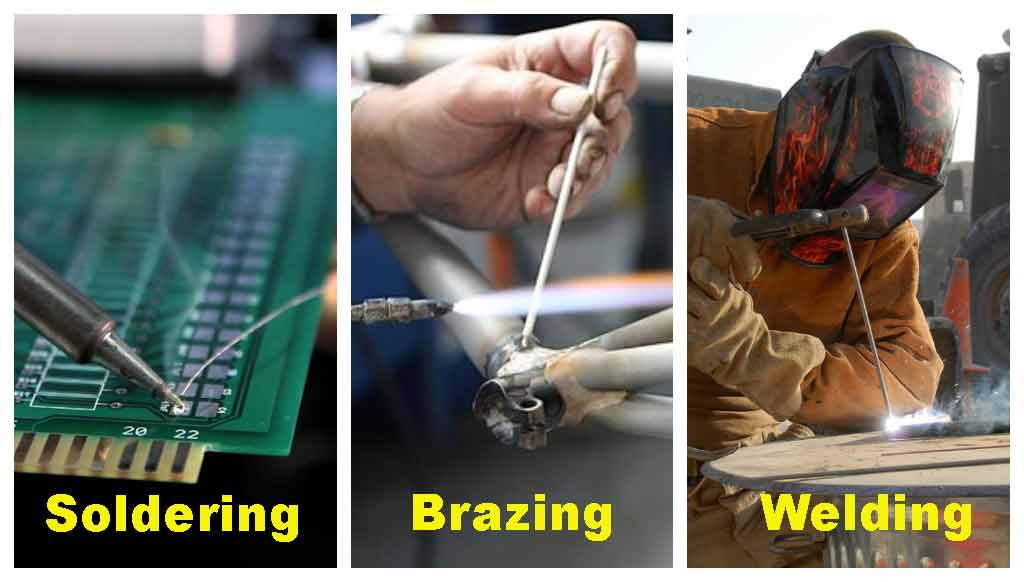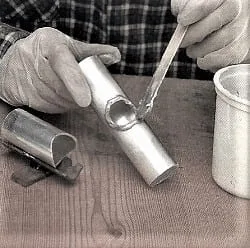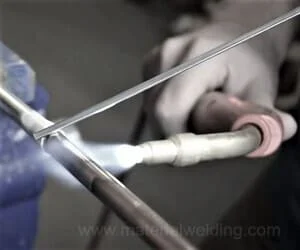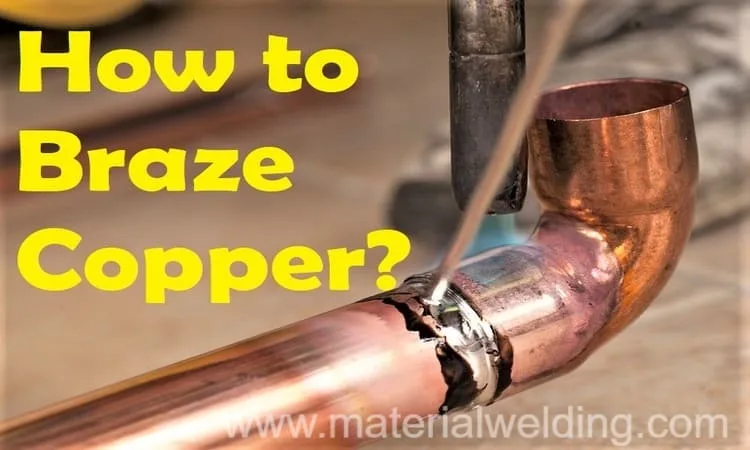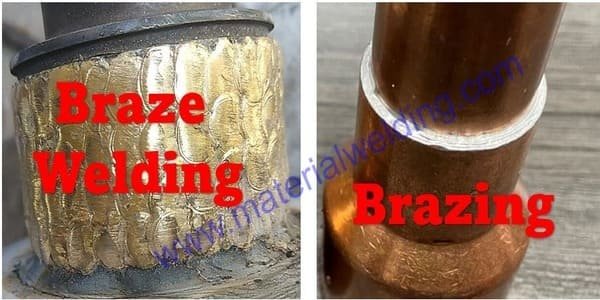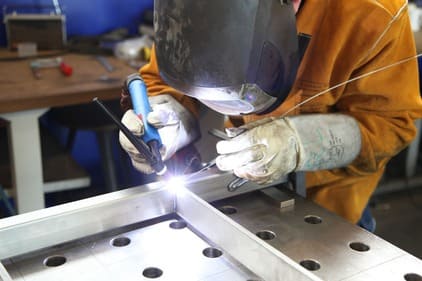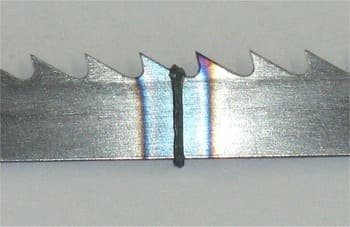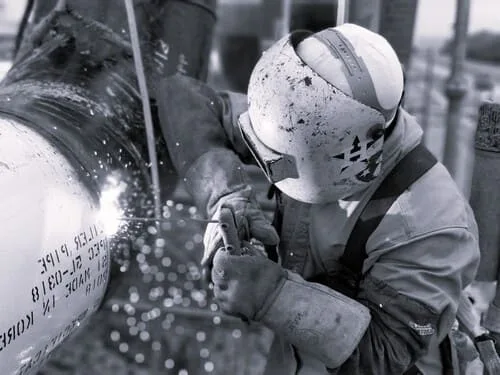Soldering flux is an essential component of the soldering process. It is a chemical substance that helps the solder flow and bond to the metal surface during the soldering process.
Soldering is a popular method used to join two metal pieces together. However, before you start soldering, you need to apply soldering flux to the metal surface to ensure the solder flows properly and creates a strong bond.
There are several types of solder flux available in the market, and selecting the right one for your task can be a daunting task.
In this article, we will discuss the different types of solder flux and their properties to help you choose the right one.
Related reading: What is Soldering?
Soldering Flux Classification system
Soldering flux are classified based on their types, activity level and detectable halides.
A summary of Soldering flux classification is:
- Flux type: Water soluble or Rosin type.
- Activity Level: Low(L), Medium (M) and High (H).
- Detectable halides: Yes (1), No (0).
| Abbreviation | Meaning | Meaning |
|---|---|---|
| OA | Organic acid | with an organic acid, strongly active |
| R | Rosin | pure rosin without activator, very weakly active |
| RA | Rosin activated | Rosin with strong activator |
| RMA | Rosin mildly activated | Rosin with mild activator |
| SAT | Synthetic activated | Rosin with synthetic activator, highly active |
| SRA | Superactivated rosin | Rosin with a very strong activator |
| WW | Water white | purest rosin, very weakly active |
Types of Soldering Flux
Soldering flux are classified based on their characteristics, available form and chemical types. Following are the main types of soldering fluxes:
- Rosin Core Flux (Rosin Activated, Rosin mild),
- Rosin soldering flux
- No Clean Soldering Flux
- Water-Soluble Liquid Flux
- Paste Flux.
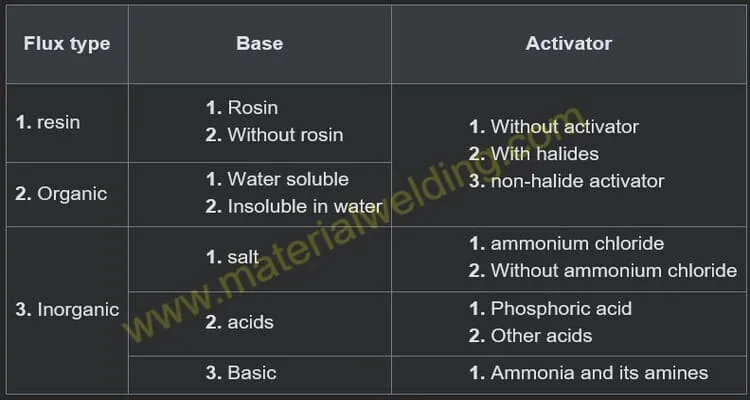
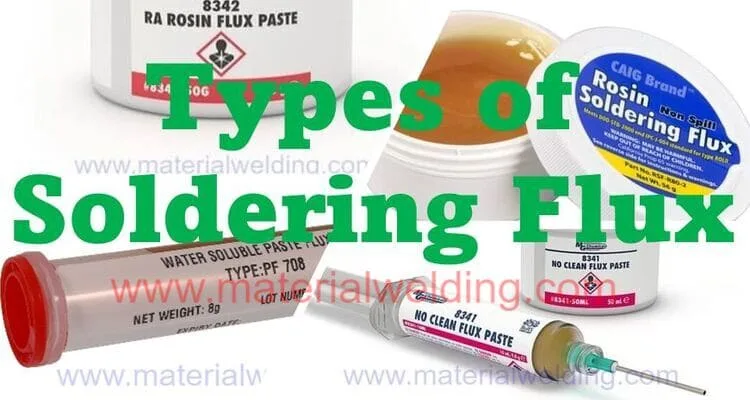
Rosin Core Flux
Rosin core flux is the most common type of soldering flux available in the market. It is made from natural rosin or synthetic resins added with solvents and is suitable for electronics soldering.
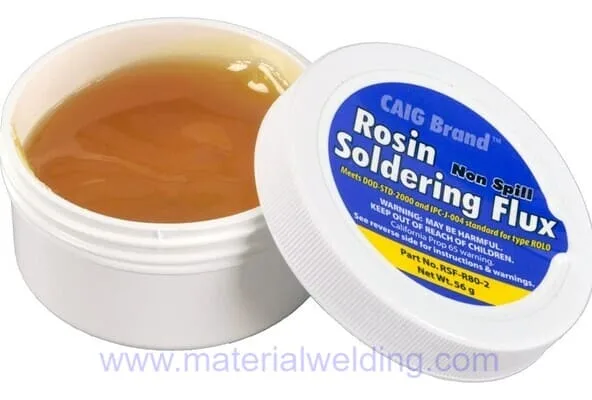
Rosin core flux is easy to use and typically used in conjunction with a soldering iron. This flux is hard and corrosion resistant.
Rosin Flux is available in different types as:
- Rosin Mildly Activated (RMA) Flux,
- Rosin Activated (RA) Flux.
No-Clean (NC) Flux
No-clean flux is a type of soldering flux that does not require any cleaning after the soldering process.
No Clean (NC) Flux is a mixture of Rosin, chemical activator and solvent base.
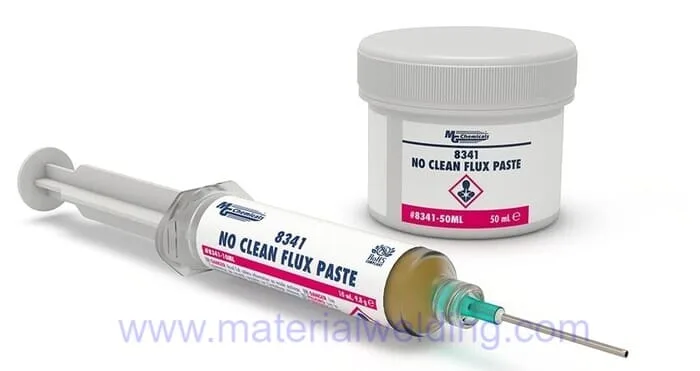
It is ideal for use in situations where cleaning is difficult or impossible, such as in electronics manufacturing. No-clean flux also has a low residue level, making it suitable for use with delicate components.
Related reading: Solution: Why solder not sticking to soldering iron tip?
Water-Soluble (WS) Liquid Flux
Water-soluble liquid flux is a type of flux designed to be easily removed with water after the soldering process. It is made from solvent, thixotropic elements and organic acids.
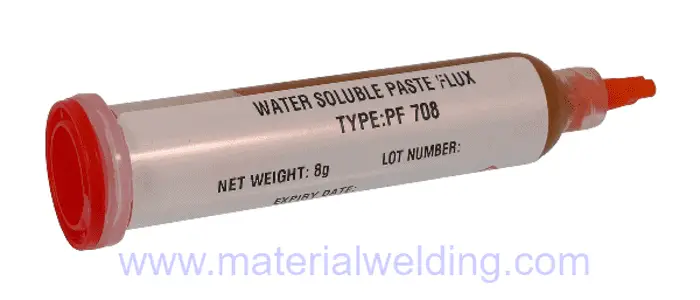
It is ideal for use in situations where cleaning is required, such as in plumbing or metalworking. It is also suitable for use with a range of metals, including copper, brass, and aluminum.
Water soluble flux is best for difficult to solder materials such as stainless steel. The activity level of WS flux vary from low, to medium and high. Residue left from WS flux can cause corrosion, hence post cleaning is required.
Related Reading: Difference Between Solder Paste And Flux
Activated Rosin (RA) Flux
Activated rosin flux is made by adding a halide (aggressive activators) to the rosin, which makes it more active and suitable for use with difficult-to-solder metals.
RA flux is made from a combination of rosin and an activator, such as an acid or alcohol, with additional ingredients added for specific properties depending on the application. The addition of these additional ingredients also helps to reduce smoke, spattering and corrosion caused by the soldering process.
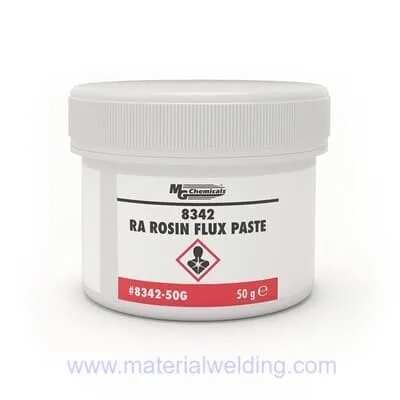
Activated rosin flux is commonly used in plumbing and metalworking applications.
The activator in RA flux increases the ability of solder to flow into small spaces, which can help prevent cold joints and keep components securely connected. It also improves electrical insulation characteristics on sensitive components like surface mount devices (SMDs).
RA flux is generally used for electronic assemblies where high temperatures may damage delicate components or where higher levels of electrical insulation are required.
Paste Flux
Flux paste is a combination of rosin, petroleum jelly, and other chemicals. It is ideal for use in situations where a more substantial flux is needed, such as in heavy-duty metalworking applications.
It is also suitable for use with a range of metals, including copper, brass, and aluminum.
Here’s a table comparing the properties of the different types of solder flux:
| Type of Solder Flux | Properties | Applications |
| Rosin Core Flux | Made from natural or synthetic resins | Electronics, small wire soldering |
| No-Clean Flux | Leaves little to no residue after soldering | Electronics manufacturing, delicate components |
| Water-Soluble Liquid Flux | Easily removed with water | Plumbing, metalworking |
| Activated Rosin Flux | Contains halide to make it more active | Plumbing, metalworking, difficult-to-solder metals |
| Flux Paste | Combination of rosin, petroleum jelly, and other chemicals | Heavy-duty metalworking |
Selection of Solder Flux
When selecting the right type of solder flux, it is essential to consider the properties of each type and choose the one that best suits your project.
Preparing the metal surface, selecting the right type of soldering flux, and using the correct technique are all crucial for achieving a successful soldering process.
It is also important to ensure that the soldering flux is stored correctly to prevent contamination and maintain its effectiveness.
The selection of solder flux depends on several factors such as joint configuration, alloy type and environmental conditions.
Generally speaking, there are four main types of solder flux: rosin-based, synthetic organic acid-based, water soluble and heat activatable fluxes.
Rosin-based fluxes are most commonly used because they have low solids content which makes them non-corrosive; they are suitable for use with many alloys including aluminum and copper alloys.
Why Soldering Flux is required?
Flux is a chemical compound used in soldering that helps to remove residues, oxides and other impurities from the surfaces being joined together; it also aids in wetting of metals during soldering.
Conclusion
In conclusion, soldering flux is a crucial component of the soldering process, and selecting the right type of flux is essential for achieving a strong and reliable bond.
Rosin core flux, no-clean flux, water-soluble liquid flux, activated rosin flux, and flux paste are all different types of soldering flux available for various applications.
